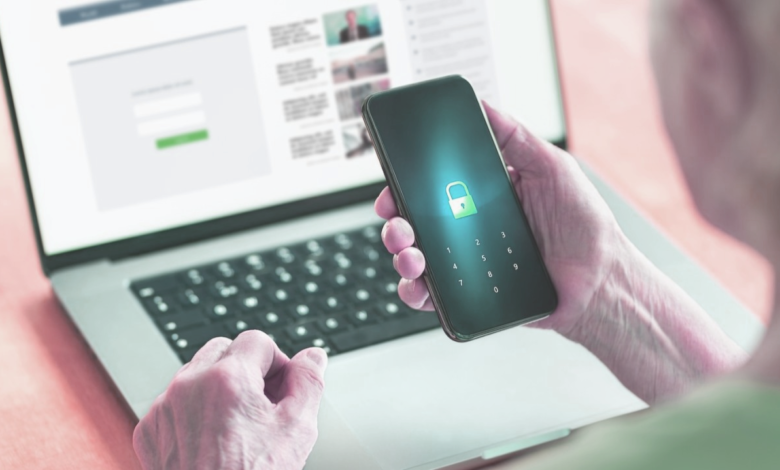Cybersecurity Basics: How to Stay Safe Online in 2025
Cybersecurity basics for 2025 Learn 10 essential tips to protect yourself online from hackers, scams & emerging digital threats.

In today’s hyper-connected world, understanding cybersecurity basics is no longer optional—it’s a necessity. As we move further into 2025, cyber threats are growing more sophisticated, targeting individuals, businesses, and even governments with alarming precision. From AI-powered phishing scams to ransomware attacks that cripple entire networks, the risks are higher than ever. Whether you’re browsing social media, managing online banking, or working remotely, knowing how to protect your digital footprint is crucial. This guide will walk you through essential strategies to safeguard your data and maintain privacy in an increasingly vulnerable online landscape.
The rapid evolution of technology brings both opportunities and dangers. While innovations like artificial intelligence and the Internet of Things (IoT) enhance convenience, they also introduce new vulnerabilities. Hackers exploit weak passwords, unsecured Wi-Fi networks, and human error to steal sensitive information. In 2025, Cybersecurity Basics isn’t just about antivirus software—it’s about adopting proactive habits, staying informed about emerging threats, and using advanced tools to defend against attacks. By mastering these cybersecurity basics, you can navigate the digital world with confidence and reduce the risk of falling victim to cybercrime.
How to Stay Safe Online in 2025
The Growing Importance of Cybersecurity Basicsin 2025
The rapid advancement of technology has brought unparalleled convenience, but it has also opened doors for cybercriminals. With artificial intelligence (AI) and machine learning being leveraged by both defenders and attackers, the Cybersecurity Basics landscape is more complex than ever. In 2025, threats such as deepfake scams, AI-powered malware, and quantum computing vulnerabilities are expected to rise. Staying informed and adopting best practices is no longer optional—it’s a necessity.
Understanding Common Cyber Threats in 2025
Cyber threats have grown in both number and complexity. Phishing remains one of the most prevalent attack methods, with criminals using AI to craft highly personalized messages that trick users into revealing sensitive information. Ransomware attacks have also become more targeted, focusing on businesses and critical infrastructure rather than individual users. Additionally, the rise of the Internet of Things (IoT) has introduced new vulnerabilities, as many smart devices lack robust security features.
Another emerging threat is deepfake technology, which cybercriminals use to impersonate executives or public figures in fraudulent video or audio calls. Social engineering attacks are also on the rise, exploiting human psychology rather than technical weaknesses. Without proper awareness, even the most cautious individuals can fall victim to these schemes.
Essential Cybersecurity Practices for Individuals
To mitigate these risks, individuals must adopt strong Cybersecurity Basics. One of the most fundamental steps is using strong, unique passwords for each online account. Password managers can help generate and store complex passwords securely. Enabling multi-factor authentication (MFA) adds an extra layer of protection, making it significantly harder for hackers to gain unauthorized access.
Regular software updates are another critical practice. Cybercriminals often exploit vulnerabilities in outdated systems, so keeping operating systems, apps, and antivirus programs up to date is essential. Additionally, users should be cautious when clicking on links or downloading attachments, even if they appear to come from trusted sources.
Securing Your Home Network
With remote work and smart home devices becoming standard, securing your home Wi-Fi network is crucial. Start by changing the default router login credentials and using WPA3 encryption, the latest and most secure Wi-Fi protocol. Disabling remote management features and enabling a firewall can further reduce risks.
For households with multiple IoT devices, creating a separate guest network can prevent compromised devices from accessing sensitive data. Parents should also implement parental controls to protect children from malicious websites and inappropriate content.
Business Cybersecurity Strategies for 2025
Businesses face even greater risks, as data breaches can lead to financial losses and reputational damage. Employee training is one of the most effective defenses against cyber threats. Regular workshops on identifying phishing emails, safe browsing habits, and secure file-sharing practices can significantly reduce risks.
Companies should also implement zero-trust security models, where every access request is verified before granting entry. End-to-end encryption for communications and data storage ensures that even if information is intercepted, it remains unreadable to unauthorized parties. Additionally, businesses must have an incident response plan in place to minimize damage in case of a breach.
The Role of AI in Cybersecurity
Artificial intelligence is playing a dual role in cybersecurity—both as a tool for defenders and a weapon for attackers. AI-powered security systems can detect anomalies in network traffic, identify potential threats in real time, and automate responses to attacks. However, cybercriminals are also using AI to develop more advanced malware that can evade traditional security measures.
To stay ahead, organizations must invest in AI-driven security solutions that continuously learn and adapt to new threats. Ethical hacking and penetration testing can also help identify vulnerabilities before malicious actors exploit them.
The Future of Cybersecurity
As cyber threats evolve, so do defense strategies. Here’s a detailed look at the future of cybersecurity and what to expect in the coming years:
AI and Machine Learning in Cyber Defense & Attacks
AI-powered security systems will detect anomalies, predict threats, and automate responses in real time. Cybercriminals will leverage AI to create smarter malware, deepfake scams, and automated phishing attacks. Security teams and hackers will engage in an ongoing AI arms race, with each side adapting to the other’s tactics.
Quantum Computing & Encryption Threats
Quantum computers could crack current encryption methods (RSA, ECC), forcing a shift to post-quantum cryptography. Governments and tech firms are already developing quantum-resistant encryption standards. Early quantum systems may introduce unforeseen security flaws, requiring rigorous testing.
Rise of Zero-Trust Security Models
Companies will adopt zero-trust frameworks, requiring continuous authentication for all users and devices. Networks will be divided into smaller zones to limit breach impacts. Biometrics (fingerprint, facial recognition) and behavioral analytics will replace passwords.
Increasing Cyber Warfare & State-Sponsored Attacks
Governments will use cyberattacks for espionage, sabotage, and influence operations. Energy grids, healthcare systems, and financial networks will face targeted attacks. Tighter international laws will emerge to combat cyber warfare.
IoT & Smart Device Vulnerabilities
Billions of poorly secured IoT devices (smart homes, wearables, industrial sensors) will be exploited. Hackers will hijack IoT devices for large-scale DDoS attacks. Governments will enforce stricter IoT security regulations.
Biometric Security & Privacy Concerns
Facial recognition, fingerprint scans, and voice authentication will replace passwords. Deepfake tech and AI-generated voices may bypass biometric checks. Laws will regulate biometric data collection to prevent misuse.
Read More: Best Study Techniques for Different Subjects: Science, Math, History & More
Conclusion
In 2025, Cybersecurity Basics is not just an IT concern—it’s a fundamental aspect of daily life. By understanding cybersecurity basics, individuals and businesses can defend against ever-evolving threats. Adopting strong passwords, enabling multi-factor authentication, keeping software updated, and staying informed about emerging risks are all crucial steps toward staying safe online.
The digital landscape will continue to change, but vigilance and proactive measures can significantly reduce vulnerabilities. Whether you’re protecting personal data or securing a corporate network, the principles of cybersecurity remain the same: awareness, prevention, and rapid response. By making cybersecurity a priority today, we can build a safer digital future for tomorrow.
FAQs
What is the most common Cybersecurity Basics threat in 2025?
Phishing remains the most prevalent threat, with attackers using AI to create highly convincing scams.
How can I protect my smart home devices from hacking?
Use strong passwords, enable WPA3 encryption, and keep firmware updated to secure IoT devices.
Why is multi-factor authentication (MFA) important?
MFA adds an extra security layer, making it harder for hackers to access accounts even if they steal passwords.
How does AI impact Cybersecurity Basics?
AI helps detect threats faster but is also used by cybercriminals to develop more sophisticated attacks.
What should businesses do to prevent data breaches?
Train employees, implement zero-trust security models, and use encryption to protect sensitive data.







